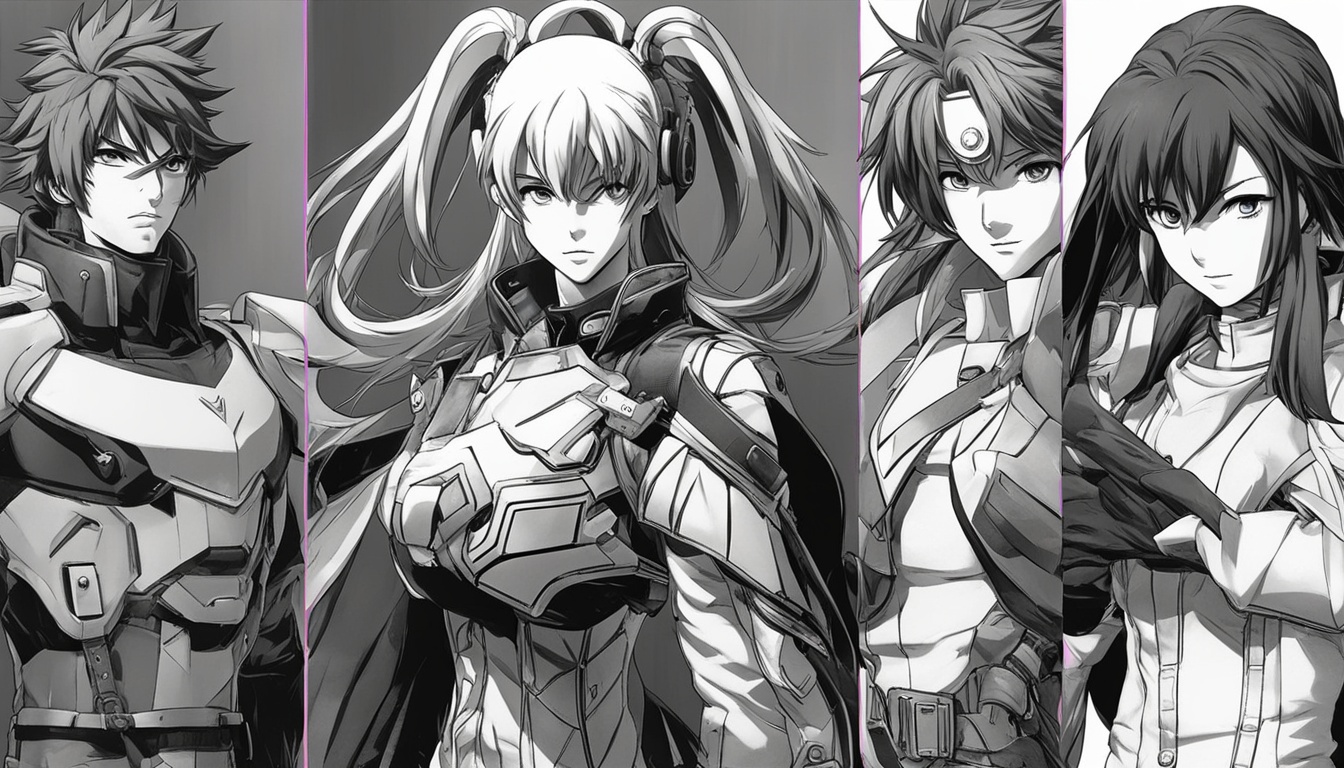Did you know CGI changed how we make anime? It’s quite a big deal. Technology has come a long way, shifting from hand-drawn to CGI in anime. This change is not only due to new tech but also a need for more ways to show creativity.
Key Takeaways:
- CGI allows for more complex and detailed animations, making anime more artistic and alive.
- Even with CGI’s benefits, hand-drawn anime still offers a special, irreplaceable charm.
- Thanks to CGI, animation can include incredible motion effects and stunning visuals.
- Using CGI is sometimes cheaper, especially for things like machines and cool backgrounds.
- Yet, matching the beauty of hand-drawn anime remains a challenge for CGI.
The future of anime looks bright with both CGI and traditional styles sticking around. With each tech step we take, anime will keep evolving. It’s exciting to see how creativity and technology will work together in anime’s journey.
Hand-Drawn Animation: A Traditional Approach
Back in the early days of cinema, hand-drawn animation, also called cel animation, ruled the big screen. It involves lots of hard work and creativity. This method has impressed viewers for many years.
Creating hand-drawn animation requires a lot of effort. Artists first make storyboards and character designs. Then, they painstakingly draw each frame by hand. By quickly showing these frames one after the other, they make things look like they’re moving.
Another key part is painting the backgrounds. Artists use watercolors or oil paints to create the setting for the action. This adds depth and feeling to the animation.
Each drawing gets put onto a clear plastic sheet known as a cel. Then, special cameras photograph each cel in order. This is how the drawings come to life, showing smooth movement.
Even as computer animation becomes more common, people still love hand-drawn animation. It gives artists a lot of freedom and lets them use their talents. Hand-drawn animations catch the eye and keep us watching.
Many famous films have used hand-drawn animation. They include Bambi and The Jungle Book, as well as newer works like Spirited Away and The Princess and the Frog. These movies show the true beauty of this classic art form.
This image shows the hard work that goes into hand-drawn animation. It captures the heart of traditional animation.
Rise of Computer-Generated Animation
The animation world changed a lot with computer-generated animation. Before the 1980s, all animations were drawn by hand. It was slow work, needing every frame to be drawn over and over.
Then, computers and digital tools came in. This changed everything. CG animation is fast and doesn’t need physical drawings. Animators now control the tiniest details, like light and camera views, making animations look real.
Computer-generated animation has become the norm in the industry, offering endless possibilities for creativity and pushing the boundaries of what can be achieved in animation.
CG studios now use advanced technology from companies like HP and Dell. With this tech, animators can turn wild ideas into amazing movies.
Pixar is at the forefront. They use their own technology, called RenderMan, in movies like Toy Story and Jurassic Park. RenderMan has been key in making CG movies a hit.
Star Wars, made by LucasFilm Animation, showed how big and detailed CG animations could be. It used the latest tech to wow people around the world.
Now, we can watch animated movies in theaters. This has made animations bigger and more impressive than ever before. Fans can dive into animated worlds on a giant screen.
The evolution in technology has not only enhanced the image quality, resolution, and overall presentation of anime movies and games but has also challenged traditional animation techniques, pushing the boundaries of what is possible.
Moving from drawings to CG, animation keeps getting better. It uses creativity and technology to thrill its fans.
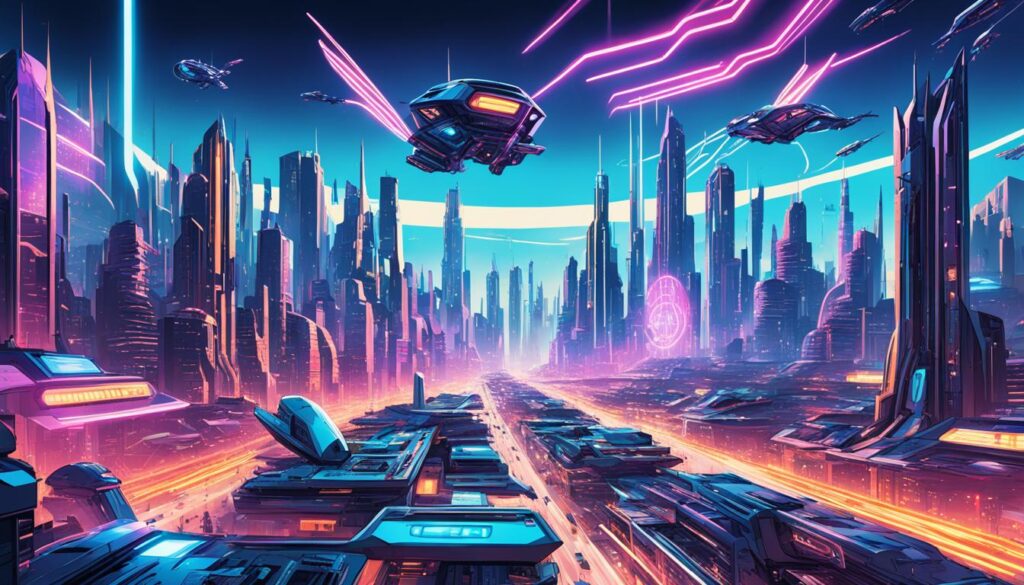
| Key Takeaways |
|---|
| Computer-generated animation has become the industry standard, offering greater control, realism, and dynamic storytelling. |
| CG studios rely on innovative software solutions and hardware systems designed by leading companies like HP, Cisco, and Dell. |
| Pixar’s core technology, RenderMan, has played a vital role in rendering visual effects and 3D animations in blockbuster movies. |
| Technological advancements have enabled animations to be shown in cinemas, expanding the viewing experience beyond TV broadcasts. |
| The evolution in technology has led to a shift in how animations are produced, enhancing image quality, resolution, and overall presentation. |
Motion Graphics and Visual Effects
Motion graphics and visual effects are key in the animation world. They help creators make stunning, immersive videos. This ability to quickly make complex animations has changed how we create content for movies, TV, and ads.
Motion graphics are flexible and can make any content more interesting. They mix text, images, and animations to tell stories in a fun way. For example, logo animations, infographics, and explainer videos all benefit from motion graphics.
Visual effects make animations more lifelike and detailed. They use CGI to combine with real-world scenes or drawings to create new realities. Imagine seeing giant explosions, magical creatures, and unique worlds come to life. Visual effects make these wonders possible.
Thanks to visual effects, animations are more thrilling and captivating. They make stories more vivid and engaging for viewers.
Using these tools has changed the game for animators. Now, they can create content that truly catches people’s eyes. The audience is left with memorable content.
The future looks bright for animation with the growth of these technologies. Motion graphics and visual effects offer endless possibilities for creative work. They promise to take viewers on incredible visual adventures.
The Potential of AI-Generated Animation
The animation world is changing fast, thanks to AI-generated animation. This new tech has caught the eye of both experts and fans. Even though AI animation is just starting, it could change how we make animations forever.
One big plus of using AI in animation is that it makes animations quickly and at a lower cost. With powerful AI algorithms, creating animations becomes easier. This means we can get animations done faster and be more productive.
AI also helps make the animation process smoother. It can come up with stories and animations with little help from humans. This lets animators focus on being more creative. So, AI makes animation easier and more efficient to produce.
When it comes to looks, AI really shines. With smart analysis of video content, AI can suggest the best spots for ads in videos. It can even make characters look more like real people. This adds a lot of realism to animations.
But, AI animation still has its limits. It’s not so good yet at telling complex, emotional stories like human animators are. Showing feelings is super important in animations. Mixing AI’s visuals with human insight can be tricky.
Still, AI’s animation potential is huge. It automates tough jobs, speeds up animation, and creates visuals better than people can sometimes. It’s changing animation’s possibilities and making animations look more real and engaging.
With more AI in animation, the role of human animators might change. AI’s productivity could mean we need fewer people. But, remember, human animators bring special artistic skills and emotions to animations. They’ll always have a place in animation.
The key to the future of animation is merging AI with human creativity. AI has a lot to offer to improve animations. It’s leading a big change in the animation industry.
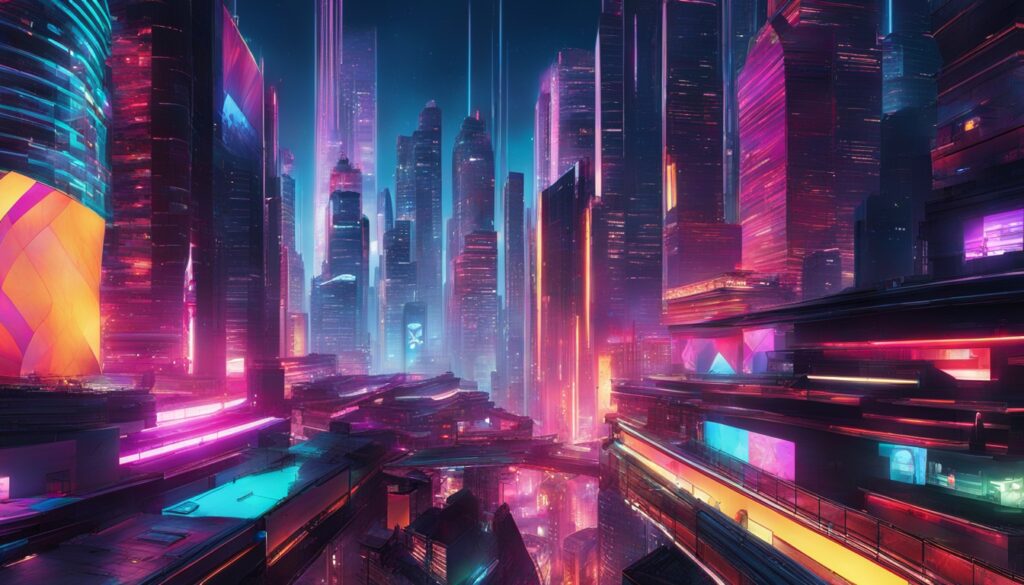
AI in animation is still growing. It’s set to be a big game-changer in animation in the coming years. AI is bringing new ideas and making the impossible, possible in animation.
The Impact of CGI in Anime: A Case Study of “Avatar: The Last Airbender”
CGI in anime became significant with “Avatar: The Last Airbender.” Even though the show often used 2D animation, it mixed in CGI. This mix sometimes caused the show to look a bit off.
The use of CGI in “Avatar” was a big step for anime. It showed that CGI could be a part of the art form. Later, in “The Legend of Korra,” CGI use became smoother as technology got better.
Mixing CGI and hand-drawn animation without a bump was tough. The creators of “Avatar” worked hard to make sure everything looked the same. They learned as they went, finding ways to blend the styles better.
CGI gave “Avatar: The Last Airbender” a boost in action scenes. But, it also came with some issues in style. Still, it pushed the industry to get better at using CGI in anime.
Turning “Avatar” into a live-action show amazed fans with its CGI. The VFX team brought the show’s magic to life in a new way. They used their skills from other famous shows and movies to do this.
They worked hard to keep the live-action true to the original while making it new. VFX brought realism to the magic of bending. This grounded the fantastic story in a more real world.
Using real-world things for the show made the VFX more convincing. It also made sure everything looked and felt real. This kind of care aimed at making fans happy shows in the final product.
The “Avatar: The Last Airbender” story reflects well on CGI in anime. Its journey from 2D to a live-action full of CGI shows how far this tech has come. The challenges also led to better ways of using CGI in anime.
The Success of CGI Integration in “Attack on Titan”
The anime “Attack on Titan” hit it big with its use of CGI. Mixing CGI backgrounds with traditional character drawings has made the show look amazing. Especially in intense action scenes, the use of CGI has boosted the drama and wow factor of the animation.
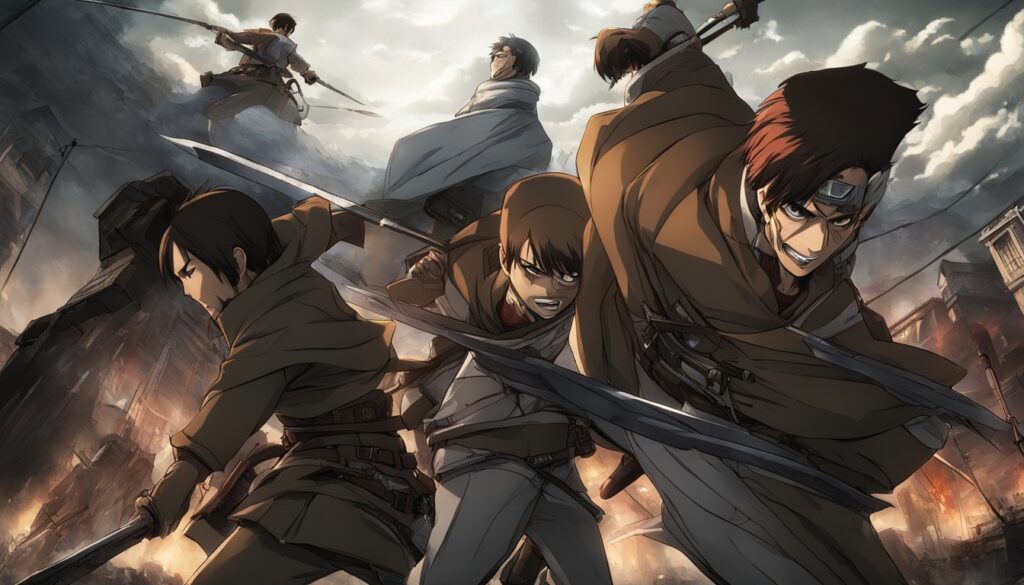
CGI in “Attack on Titan” is a step forward in anime’s use of technology. It makes the show’s visuals more detailed and lifelike, especially during action. This approach doesn’t only make the animation look better, but it helps the animation team work more efficiently too.
Some have criticized CGI in anime for not fitting with the old-school look and sometimes causing quality issues. However, “Attack on Titan” has found a sweet spot. By carefully blending CGI with the traditional style, they’ve created a coherent, engaging world.
The success of “Attack on Titan” shows CGI’s bright future in anime. As the industry gets better at using CGI, we’ll probably see more and more amazing animations in the future.
Budget Constraints and the Adoption of CGI in Anime
The high costs of traditional animation push many studios to embrace CGI in anime. Creating animations by hand involves a lot of work and specialized skills. On the other hand, CGI offers a cheaper solution that still maintains quality. This is a key reason why studios turn to it.
CGI in anime simplifies the work by using computer-generated imagery. It does away with drawing each frame by hand. This cuts down costs, especially for making things like robots or detailed backgrounds.
Switching to CGI lets studios save money. They can then spend this saved cash on other parts of their projects, like better stories or characters. This means viewers get to see anime with richer content and quality.
The use of CGI technology gives animators new ways to be creative. It allows them to make more detailed and breath-taking scenes. This can draw viewers deeper into the show, with scenes feeling more real and engaging.
It’s true that both CGI and traditional animation have their place in anime. Hand-drawn animation adds a touch of unique style and personal flair to a show. The mix of CGI and traditional styles can create a balanced and enriched viewing experience.
In the end, the move to CGI in anime is largely about managing budgets. Studios see the advantages in cost and creativity that CGI presents. And this shift could continue to change how anime is made, blending different techniques for future productions.
| Statistics | Insights |
|---|---|
| Approximately half of the budget for an anime production is often given to the studio, with the rest distributed to broadcasters and other contributing companies. | Allocation of budget is crucial for studios to manage costs efficiently. |
| Traditional animation is still fundamental in commercial anime production, allowing for more individual expression. | Hand-drawn animation retains its value in bringing unique artistic expression to anime. |
| In the 1990s, CGI started becoming more common in anime as a supplemental technique alongside traditional hand-drawn animation. | The gradual integration of CGI in anime began as a way to enhance animation quality and cost efficiency. |
Pushing the Boundaries: The Success of “Spider-Man: Into the Spider-Verse”
“Spider-Man: Into the Spider-Verse” changed the game in CGI animation. It decided to not be real but stayed true to the character’s comic book roots. This choice led to a unique and visually stunning film that won hearts.
This movie showed how flexible CGI animation can be. It broke free from traditional styles and took a comic book approach. This inspired more creativity in animations and proved unique films can be a success.
“Across the Spider-Verse” will keep pushing the boundary with innovative designs and a fun adventure. This sequel is highly awaited, showing “Spider-Man: Into the Spider-Verse”‘s lasting influence.
“Spider-Man: Into the Spider-Verse” not only changed CGI but also encouraged others to try new things. Its success at Sony showed its methods can work well. It paved the way for even more creative films in the future.
“Mitchell and The Machines,” from Sony, used similar animation but in a different story. This shows the influence of the original “Spider-Verse” on creative efforts away from superheroes.
More movies have since adopted “Spider-Verse”‘s dynamic and unique style. Films like “The Bad Guys” and “Puss in Boots: The Last Wish” show this. The animation world is now more colorful and imaginative because of it.
The impact of “Spider-Man: Into the Spider-Verse” is clear in upcoming movies like “Nimona,” “Elemental,” and “The Super Mario Bros. Movie.” These new projects are inspired by its success, showing its legacy.
Now, animated films are seen as equal to live-action ones. “Spider-Verse” played a key role in this perception. It elevated the genre and inspired more groundbreaking projects.
In the end, “Spider-Man: Into the Spider-Verse”‘s impact on animation is undeniable. It revolutionized CGI and inspired a new wave of creativity. Its success and influence will be felt in the animation world for years to come.
Creative Challenges in Replicating Hand-Drawn Look in CG Anime
Creating a hand-drawn style in CG anime is hard. The unique style of Japanese “anime” comes from simplification and saving money. These aspects are not easy to copy in CG. Many things like detailed hair and eyes are tough to mimic. And, adding tiny flaws and different line qualities is key.
Getting the right timing in the animation is also tough. In Japanese animation, a drawing might be used for several frames. This is very different from the flow of CG animation. Artists have to find new ways to get that same feel in CG.
Finding a balance is critical. CG technology offers a lot, but it’s important to keep that anime look. This means deciding when to use the latest tech and when to stick to simplicity. It’s all about making it look real but still like anime.
Turning CG into something that looks hand-drawn shows how important traditional animation still is. It shows how much talent and hard work go into combining these styles. The result is the best of both worlds, honoring the art in each.
The Role of Experience in Improving CGI in Anime
Experience is key to making CGI better in anime. Animation studios learn by mixing CGI with animation. This mix helps them find new ways to make CGI look great in shows and movies.
The “Avatar” series is a great example. “Avatar: The Last Airbender” tried new things in 2005 with CGI and 2D animation. Then, its spinoff “The Legend of Korra” in 2012 used CGI even better. After more experience, the team at Nickelodeon made the CGI fit in perfectly.
Wit Studios also made a big change with “Attack on Titan” in 2013. They used CGI in new, exciting ways, setting a new standard for anime. Their innovative work showed how much CGI can improve a show’s look and feel.
But, sometimes a lack of money means passing the job to others. Wit Studios gave the fourth “Attack on Titan” season to MAPPA. Although new to a big project, MAPPA managed to make an amazing season within deadlines. This shows how experience and skill can overcome challenges.
Great films, like “Spider-Man: Into the Spider-Verse,” have also changed the game. This movie, with its unique comic style, showed how inventive CGI can be. It won big awards, proving that creativity and experience drive the CGI world forward.
Experience and the Evolution of CGI in Anime
As studios work on more projects, they get better at using CGI. This experience makes their animations more consistent and true to their style. With time, they become masters at blending CGI with traditional methods.
The anime world keeps growing, and so does the use of CGI. With more talented people joining the industry, we can expect great things. Their know-how and creativity will make CGI in anime more impressive for everyone to enjoy.
The Future of CGI in Anime
CGI in anime is getting even better thanks to advancing technology. With each new technology, CGI in the animation world grows too. Anime’s global appeal helps push the use of CGI further. As we get better at making things look real, anime will look even more amazing in the future.
The progress of technology is key to the development of CGI in anime. Computer-generated imagery has changed everything since the late 20th century. “Toy Story” in 1995 proved how powerful CGI can be. This was just the start of its journey in anime.
“Spider-Man: Into the Spider-Verse” is a great example of new CGI animation. It won the Oscar for Best Animated Feature in 2019. The movie used a special style inspired by comic books. This shows CGI can be very flexible and creative in animation.
Technology keeps making CGI in anime look better. It lets more people make anime without huge costs. This means we get to see more unique and creative anime from different artists and studios.
Motion capture technology is also making a big difference. It makes animated characters look and move more like people. Virtual reality (VR) is adding a new level of storytelling too. It gives watchers an immersive, new kind of animation experience.
Looking to the future, artificial intelligence (AI) and machine learning could change how we make anime. They could make production faster and improve the quality of animations. They might even create stories that change based on what the viewer likes.
The future of CGI in anime is full of promise. Yet, there are still challenges, like budgets and time pressure. We saw this in the final “Attack on Titan” season. But, as tech and skills grow, these issues will get solved.
To sum up, the future of CGI in anime looks bright. With each tech leap, anime becomes more breathtaking. CGI will keep on making anime more creative and immersive. It’s sure to be a big part of anime’s future.
The Importance of Traditional Hand-Drawn Animation in Anime
Traditional hand-drawn animation holds a special place in the world of anime. Despite CGI’s big steps forward, hand-drawn animation brings a unique style and emotion. This style is loved by anime fans and creators because of its nostalgia and charm.
Anime used to be drawn on cels before CGI came around in the 1990s. Since then, the industry has turned to digital tech, letting go of cels and moving to digital. But even with this change, the traditional method still captures people’s hearts.
Hand-drawn animation stands out through its artistry and emotion. Every frame is crafted by hand, allowing for detailed work. This shows in the designs, movements, and backgrounds of anime we all love.
Moreover, traditional animation has shaped the anime we know today. It’s thanks to the style’s big eyes, colorful hair, and expressive characters that anime has its global appeal.
Traditional hand-drawn animation offers a level of artistic expression and a unique style that cannot be fully replicated by CGI.
CGI animation has its own impressive qualities, yes. But traditional animation is more than just a style. It ties anime to its past and lets artists tell stories in various ways.
Disney’s film “Wish,” from 2023, mixed 2D and CGI to make a big impact. It started conversations about traditional animation possibly making a strong comeback.
Supporting independent artists helps keep traditional animation alive. Sharing their work can inspire a new love for this form of art. Mixing classic and modern animation can also deepen our appreciation for animation’s history.
In closing, traditional hand-drawn animation is crucial for anime. It adds artistic depth, unique features, and connects us to the medium’s past and future. Hand-drawn animation in anime stays essential despite CGI’s progress.
The Influence of Technology on the Evolution of Anime
Technology has been key in shaping anime’s growth. It has driven the industry ahead, improving animation techniques. Computers, software, and digital tools have changed how we create and watch anime.
Anime started getting popular in the 1980s outside Japan, thanks to English dubs. This made it accessible to a global audience, opening new doors for fans.
DVDs and Blu-rays were a step up from VHS tapes, offering better video quality. They let viewers pick between subtitles or dubs. Also, they could hold more episodes, even whole series, on one disc.
On the other hand, VHS tapes could only fit a few episodes. This made it hard and costly for fans to collect a whole series. If sales were low, companies stopped putting them out, too.
Before the internet was fast for everyone, fansubs and anime lists were how fans got content. Sharing files through peer-to-peer and IRC was typical before Bittorrent. These ways allowed people to watch anime not officially available in their area.
Now, simulcasts are the main way fans watch new anime. Websites like Crunchyroll and Hulu get episodes right after they air in Japan. This lets fans across the globe enjoy new anime almost at the same time as Japan.
Animation Software and Tools
Technology also helped create powerful animation software and tools. These are crucial for making detailed and beautiful anime. Programs like Autodesk 3ds Max are top picks for 3D animation.
Adobe Animate is favored for its integration with other Adobe software. Animaker has a big library of assets. It offers many options for animators to use in their work.
The Future of Anime
The animation industry, including anime, has grown a lot. As tech gets better and people’s tastes change, anime will evolve. We’ll see new ways of making and enjoying anime.
New animation techniques, like CGI and effects, have broadened anime’s creative horizon. These, along with simulcasting, have made anime reachable by more people. This could change how global audiences connect with anime.
The anime category is earning more than $17 billion worldwide. With tech evolving, animators will get more creative tools. This could mean even more stunning and captivating anime in the future.
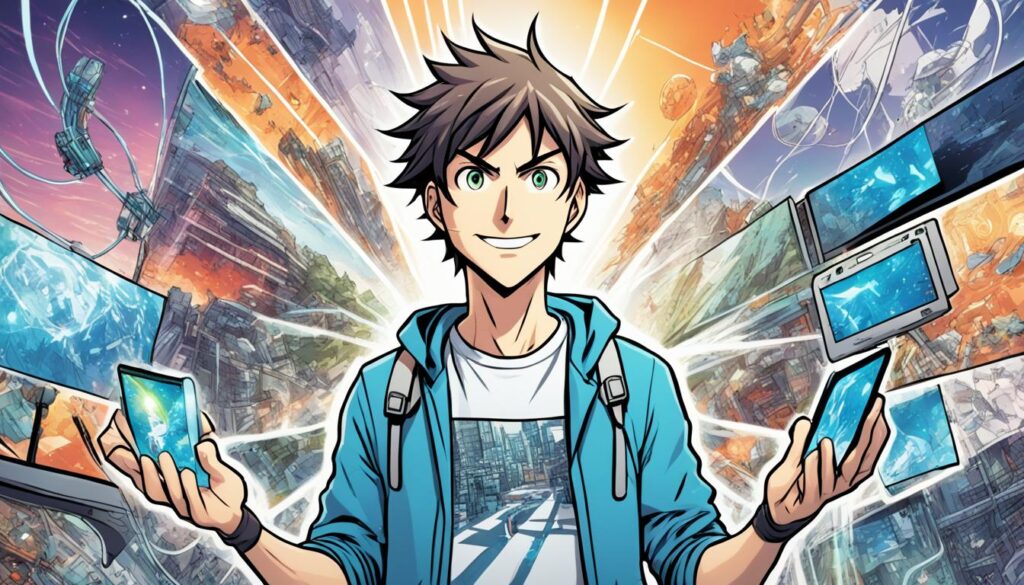
Conclusion
Anime has evolved greatly, moving from hand-drawn to the use of CGI. This change was fueled by new technologies and the desire for more artistic freedom. It all started changing in the 1960s. Back then, the animation world saw a big jump in the making of anime. Studios like Studio Ghibli, created by Hayao Miyazaki and Isao Takahata, brought us amazing movies. Classics such as “My Neighbor Totoro” and “Spirited Away” have won over fans all around the globe.
Improvements in digital tech have played a big part in how anime is made and shared. The 2000s saw a boom in the love for anime around the world. This was made easier by new streaming services. Shows like “Dragon Ball” and “Sailor Moon” are key reasons why anime has such a big following worldwide.
By the 1980s and 1990s, anime like mecha and cyberpunk were becoming more popular. The industry started collaborating with talents from all over the world. This made anime even more beloved worldwide. Production I.G and Madhouse are just a couple of studios that have set a high standard for quality over the years. Films like “Princess Mononoke” and “Neon Genesis Evangelion” are remembered for their amazing stories and animations.
Nowadays, events like Anime Expo in Los Angeles draw in fans from all corners of the world. These events offer fans a chance to dive deep into their favorite shows with cosplay and more. Anime isn’t just for kids; it attracts people of all ages with its engaging stories, such as “Death Note.”
The field of anime is always growing, thanks to both CGI and traditional animation. As technology gets better, so does the anime we love. The future of anime looks bright. It will surely keep entertaining people for many years to come.
FAQ
What is the evolution of anime from hand-drawn to CGI?
Anime started with hand-drawn art. Now, it uses computers to make more detailed animation. The change happened as technology grew, making animating easier and more realistic.
What is hand-drawn animation?
Hand-drawn animations are made by drawing each frame. These drawings are put together to make things move. This process allows for detailed, beautiful animations.
What is computer-generated animation?
Computer-generated animation is made on a computer. It’s used for making things move in 3D. This method saves time and lets creators control tiny details in animations.
How are motion graphics and visual effects used in animation?
Motion graphics are animation’s beautiful side. They make stories more fun and memorable. Visual effects make animations look better, creating amazing new worlds.
Both add a lot to the animation experience.
What is the potential of AI-generated animation?
AI could change how quick we get new animations. It would speed up the process, making animations faster and cheaper to create. So, AI is a big deal for the animation world.
How has CGI integration impacted anime like “Avatar: The Last Airbender”?
In “Avatar: The Last Airbender,” adding CGI was a big change. Some fans didn’t like this shift. But, later series, like “The Legend of Korra,” did it better. They showed how CGI can blend smoothly with hand-drawn animation.
How was CGI successfully integrated in “Attack on Titan”?
In “Attack on Titan,” CGI was used for backgrounds. It mixed perfectly with hand-drawn characters, making the scenes look amazing. This showed the true power of CGI in anime’s action-packed moments.
Why is CGI adoption increasing in the anime industry?
CGI is taking over because it’s cheaper and faster to use than hand-drawing. It’s a great option for studios that want to save money. Especially, it’s good for making machines look real and for dynamic shots of backgrounds.
How did “Spider-Man: Into the Spider-Verse” revolutionize CGI animation?
“Spider-Man: Into the Spider-Verse” made CGI stand out with its unique style. It blended 3D animation and comic book art. This mix made the movie look awesome and won many awards.
What are the challenges in replicating the hand-drawn look in CG anime?
Making CG anime look hand-drawn is hard. The style of classic Japanese animation is unique. Making elements like hair look right and keeping anime’s special timing in CG are tough jobs.
How does experience improve CGI in anime?
Over time, studios get better at using CGI in anime. With each project, they learn more. This makes CGI in anime grow better over time as they find new techniques.
What does the future hold for CGI in anime?
CGI’s future in anime looks bright with more tech advances. Better tools will make CGI in anime look even cooler. This means more exciting and high-quality anime shows for us.
What is the importance of traditional hand-drawn animation in anime?
Hand-drawn animation brings a special feel that CGI can’t match. Many fans and creators appreciate this. It shows the heart and soul of anime, keeping it special and important.
How has technology influenced the evolution of anime?
Technology has changed anime a lot. We can make complex animations now, thanks to computers and software. It will keep improving anime in the future, giving creators more power.
Can hand-drawn and CGI animation coexist in the future of anime?
Both hand-drawn and CGI animation have a place in anime’s future. They offer unique styles that shape anime’s journey. So, yes, both will continue to play important roles in anime’s development.
Source Links
- https://thevikingnews.com/3776/ae/the-evolution-of-computer-generated-imagery-in-2d-animation/
- https://blog.siggraph.org/2022/10/cg-takeover-in-japanese-animation.html/
- https://yalebooks.yale.edu/2018/11/19/the-art-of-anime/
- https://www.intofilm.org/films/filmlist/91
- https://colbay.medium.com/a-day-in-the-animated-life-part-i-87f5a7ea9103
- https://discuss.pencil2d.org/t/what-is-the-official-definition-of-hand-drawn-animation/6628
- https://apilama.com/2020/06/29/how-technology-evolutions-changed-animation/
- https://en.wikipedia.org/wiki/History_of_anime
- https://washiblog.wordpress.com/2011/01/18/anime-production-detailed-guide-to-how-anime-is-made-and-the-talent-behind-it/
- https://poggers.com/blogs/data/history-of-anime
- https://www.cbr.com/ai-created-anime-key-frame-scrape-controversy/
- https://thevideoanimationcompany.com/how-ai-is-set-to-impact-the-animation-industry/
- https://www.e2enetworks.com/blog/how-animation-industry-can-be-transformed-by-generative-ai
- https://askananimatoranything.tumblr.com/post/23950164584/repost-the-influence-of-japanese-animation-on
- https://www.cgmagonline.com/interviews/vfx-avatar-last-air-bender-anime/
- https://www.linkedin.com/pulse/how-did-anime-go-from-nerdy-cringey-mainstream-deepa-d-souza
- https://blog.sakugabooru.com/2020/06/02/attack-on-titan-mappa-otp/
- https://www.toolify.ai/gpts/the-dangers-of-cgi-in-anime-147719
- https://eac.libguides.com/c.php?g=723550&p=5215189
- https://www.thegamer.com/spider-verse-animation-landscape-history-influence-film/
- https://www.sanjuandailystar.com/post/how-the-spider-verse-movies-have-changed-animation-for-the-better
- https://screenrant.com/spider-man-across-the-spider-verse-animation-styles/
- https://filmaro.in/hayao-miyazaki-hand-drawn-anime-style-explained-2023-anime-article/
- https://washiblog.wordpress.com/2018/07/28/why-3dcg-cannot-be-allowed-to-replace-2d-animation/
- https://ericnwankwo.medium.com/the-magic-of-animation-from-sketch-to-screen-8e0c46ff1fcf
- https://thevikingnews.com/3776/ae/the-evolution-of-computer-generated-imagery-in-2d-animation
- https://www.re-thinkingthefuture.com/architectural-community/a10806-the-role-of-technology-in-the-production-and-consumption-of-anime/
- https://www.prayananimation.com/blog/how-technology-has-transformed-animation-a-look-at-the-past-present-and-future/
- https://medium.com/@maisiemateos/the-survival-of-traditional-animation-in-the-digital-age-9378dd25c755
- https://www.themarysue.com/technology-anime-history/
- https://medium.com/@merch2anime/exploring-the-history-of-anime-95aee36e82d9
- https://gradesfixer.com/free-essay-examples/the-history-popularity-and-evolution-of-anime/
